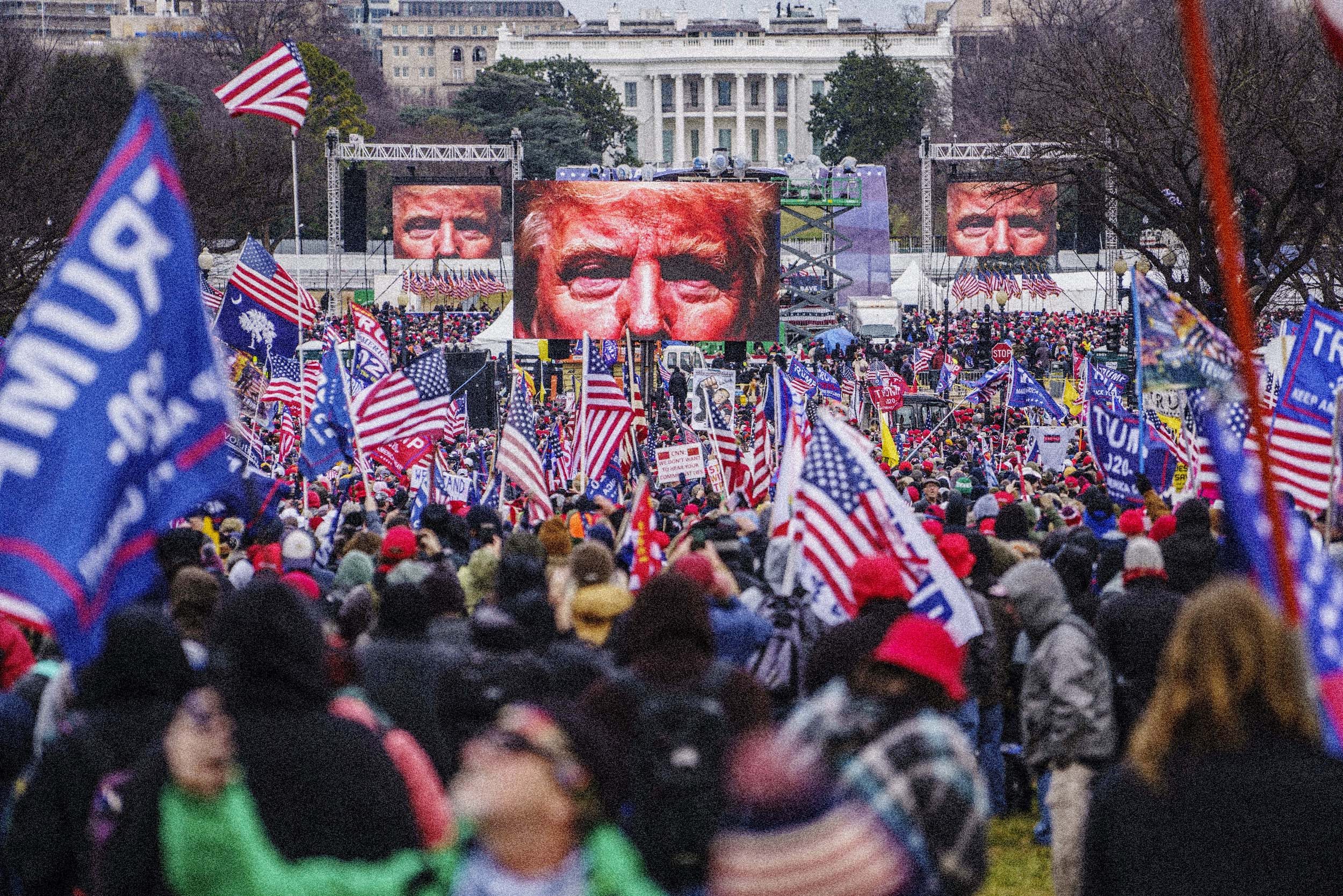By Alexander Azadgan
Abstract
The question of whether the United States is on the brink of a civil war has garnered increased attention from scholars, journalists, and the public in the aftermath of rising political polarization, social unrest, and institutional distrust. In this article, I critically evaluate the potential for civil war in contemporary America through a multidisciplinary lens, incorporating political science, sociology, history, and conflict studies. By distinguishing between traditional civil wars and modern forms of political violence, in this article I argue that while a conventional civil war clearly remains unlikely, the country is facing a growing threat of asymmetric, factional, and ideologically driven violence.
In this article, I examine structural precursors to civil conflict, evaluate contemporary data, and contextualizes America’s current trajectory within global patterns of democratic backsliding and political extremism.
Introduction
The notion of civil war in the United States evokes powerful historical and emotional associations, particularly with the American Civil War (1861–1865). However, in the 21st century, the term “civil war” is increasingly used to describe the threat posed by internal ideological divisions, political extremism, and sporadic violence. The storming of the U.S. Capitol on January 6, 2021, intensified national and global discussions about the stability of our American democracy. This article asks: Is the United States at risk of civil war? To address this, we must first define what constitutes a civil war and analyze whether the current conditions in the United States align with those definitions.
Defining Civil War
In political science, civil war is generally defined as sustained, organized violence between factions within a single country, involving at least 1,000 battle-related deaths per year (Sambanis, 2004). Key characteristics include:
■ Two or more organized groups
■ Dispute over control of the central government, a region, or a policy issue
■ Use of force with substantial casualties
■ Government involvement as a participant
Modern scholars also identify “low-intensity civil conflict” and “political violence” as alternatives to full-scale civil war. This broader category includes insurgencies, terrorism, guerrilla warfare, and asymmetric conflict (Kalyvas, 2006).
Historical Precedent and Political Context
- The Civil War (1861–1865)
The U.S. Civil War was a conventional war between well-defined geographic entities with standing armies and clear secessionist aims. The conflict was driven by structural and moral divides, primarily slavery and federalism. Today’s situation is fundamentally different in form but not entirely in social substance – namely, deep polarization and perceived illegitimacy of the political system.
The Cold Civil War Thesis
Some scholars argue the U.S. is in a “cold civil war,” marked not by open combat but by deep ideological, racial, and cultural polarization. This manifests in partisan media ecosystems, political gridlock, and mutual delegitimization between political factions (Lilliana Mason, 2018).
Indicators of Civil Conflict Risk
- Political Polarization
The United States has seen a dramatic increase in affective polarization – the emotional distrust and disdain for opposing political views (Iyengar & Westwood, 2015).
This form of polarization correlates with increased tolerance for political violence (Kalmoe & Mason, 2022).
Declining Trust in Our Institutions
Confidence in democratic institutions such as the judiciary, press, and electoral systems is deteriorating. According to Pew Research (2023), only 20% of Americans say they trust the federal government to do the right thing most of the time.
Armed Groups and Militia Activity
The U.S. is unique among Western democracies in its high levels of civilian gun ownership and the presence of organized, ideologically motivated armed groups, such as the Oath Keepers and Proud Boys. These groups have shown willingness to use violence for political ends (Anti-Defamation League, 2021).
Electoral Legitimacy and Democratic Backsliding
Disputes over electoral legitimacy, particularly following the 2020 presidential election, have undermined trust in peaceful transitions of power. The International IDEA’s 2022 Global State of Democracy report categorized the U.S. as a backsliding democracy.
Obstacles to Full-Scale Civil War
Despite alarming trends, several factors inhibit the possibility of a conventional civil war:
Lack of Geographic Separation
Unlike in 1861, today’s divisions are not regional but ideological, with Democrats and Republicans living side-by-side across states.
Strong Federal Government and Military
The state’s monopoly on legitimate violence remains largely unchallenged.
Economic Interdependence
The complex, integrated national economy provides disincentives for widespread disruption.
These structural impediments make traditional secessionist civil war highly improbable.
The More Likely Scenario: Asymmetric and Irregular Political Violence
Rather than conventional war, the U.S. is more vulnerable to:
Stochastic terrorism: Acts of violence committed by individuals influenced by extremist rhetoric, without formal group coordination.
Localized insurgencies: Sporadic violence in specific regions or against specific institutions.
Information warfare: Disinformation campaigns that degrade institutional legitimacy and incite unrest.
Such phenomena resemble the dynamics seen in Colombia or Northern Ireland more than the American Civil War.
Comparative Analysis
Countries like Yugoslavia (1990s), Chile (1973), and Ukraine (2014) offer cautionary tales of democratic collapse and internal conflict. The common precursors – polarization, economic distress, and institutional decay – are present in varying degrees in the U.S.
However, no single causal factor determines civil war; rather, it’s the convergence of multiple reinforcing variables. In this respect, the U.S. remains resilient but not immune.
Conclusion: Civil War or Civil Breakdown?
The United States is unlikely to experience a civil war in the conventional sense. However, the rise in political violence, institutional delegitimization, and extreme polarization may usher in an era of chronic instability. This could entail persistent low-level violence, regional unrest, and democratic dysfunction – phenomena falling short of civil war but nonetheless dangerous to national cohesion and democratic governance.
The better framework may be “civil breakdown” or “regime stress,” where the state struggles to enforce law uniformly, maintain legitimacy, and manage political dissent peacefully. Avoiding this outcome will require addressing the root causes of polarization, rebuilding democratic norms, and depoliticizing key institutions.
References
- Iyengar, S., & Westwood, S. J. (2015). “Fear and loathing across party lines: New evidence on group polarization.” American Journal of Political Science, 59(3), 690–707.
- Kalmoe, N. P., & Mason, L. (2022). “Radical American Partisanship: Mapping Violent Hostility, Its Causes, and the Consequences for Democracy”. University of Chicago Press.
- Kalyvas, S. N. (2006). “The Logic of Violence in Civil War”. Cambridge University Press.
- Mason, L. (2018). “Uncivil Agreement: How Politics Became Our Identity”. University of Chicago Press.
- Sambanis, N. (2004). “What is civil war? Conceptual and empirical complexities of an operational definition.”, Journal of Conflict Resolution, 48(6), 814–858.
- Pew Research Center (2023). Public Trust in Government: 1958–2023.
- Anti-Defamation League (2021). The Oath Keepers and the Militia Movement in the United States.
- International IDEA (2022). The Global State of Democracy Report.
🔴 DISCLAIMER: I maintain my 1st Amendment right to be able to express my own personal views on different issues, especially controversial ones. I do not, never have, never will promote anyone’s “propaganda”. I’m an equal opportunity critic and a 100% financially and ideologically independent and patriotic American scholar whose core academic responsibility and moral obligation is to speak the truth and raise awareness. I’m continually guided by John 8:32 which states, “Truth shall set you free.” As such, the content of all my social media posts, tv interviews, lectures, podcasts, webinars, published articles, etc. (which are all at my personal capacity) are presented SOLELY as my own opinions. Therefore, my points of view should not be misinterpreted, mischaracterized, and/ or misconstrued as a statement of promoting (on behalf of) ANY person(s), ANY political cause, ANY organization, ANY government, and/ or ANY country. Any assertions to the contrary are categorically false and are a misrepresentation of facts and would be considered libelous and slanderous, i.e. a defamation of my personal character and public persona. I’m simply exercising my 1st Amendment right as a proud American citizen, which is freedom of speech and freedom of thought.
Source: Center for Geostrategic Studies
Cover photo: The „Save America“ march and rally at the Ellipse near the White House on Jan. 6. (Mark Peterson / Redux file)

